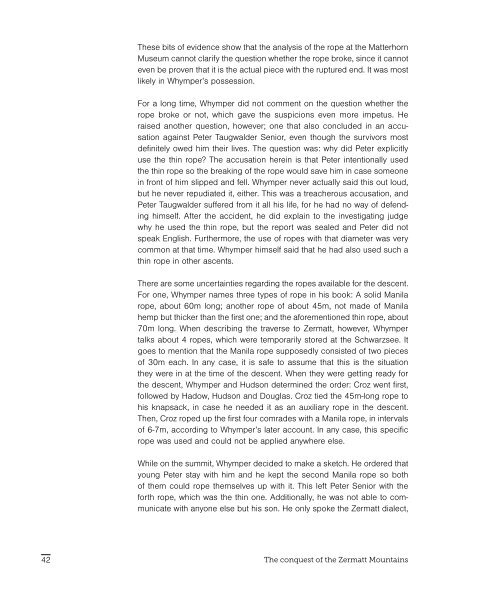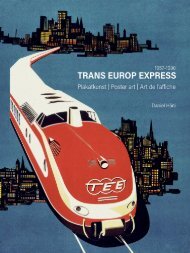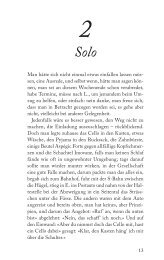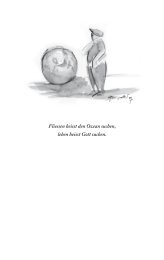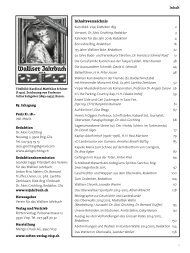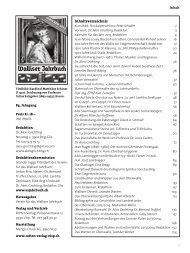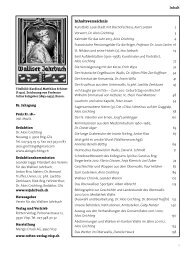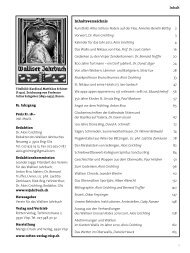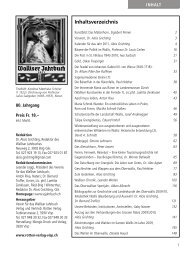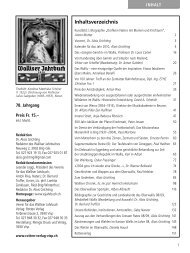Biner_Leseprobe
Create successful ePaper yourself
Turn your PDF publications into a flip-book with our unique Google optimized e-Paper software.
These bits of evidence show that the analysis of the rope at the Matterhorn<br />
Museum cannot clarify the question whether the rope broke, since it cannot<br />
even be proven that it is the actual piece with the ruptured end. It was most<br />
likely in Whymper’s possession.<br />
For a long time, Whymper did not comment on the question whether the<br />
rope broke or not, which gave the suspicions even more impetus. He<br />
raised another question, however; one that also concluded in an accusation<br />
against Peter Taugwalder Senior, even though the survivors most<br />
definitely owed him their lives. The question was: why did Peter explicitly<br />
use the thin rope? The accusation herein is that Peter intentionally used<br />
the thin rope so the breaking of the rope would save him in case someone<br />
in front of him slipped and fell. Whymper never actually said this out loud,<br />
but he never repudiated it, either. This was a treacherous accusation, and<br />
Peter Taugwalder suffered from it all his life, for he had no way of defending<br />
himself. After the accident, he did explain to the investigating judge<br />
why he used the thin rope, but the report was sealed and Peter did not<br />
speak English. Furthermore, the use of ropes with that diameter was very<br />
common at that time. Whymper himself said that he had also used such a<br />
thin rope in other ascents.<br />
There are some uncertainties regarding the ropes available for the descent.<br />
For one, Whymper names three types of rope in his book: A solid Manila<br />
rope, about 60m long; another rope of about 45m, not made of Manila<br />
hemp but thicker than the first one; and the aforementioned thin rope, about<br />
70m long. When describing the traverse to Zermatt, however, Whymper<br />
talks about 4 ropes, which were temporarily stored at the Schwarzsee. It<br />
goes to mention that the Manila rope supposedly consisted of two pieces<br />
of 30m each. In any case, it is safe to assume that this is the situation<br />
they were in at the time of the descent. When they were getting ready for<br />
the descent, Whymper and Hudson determined the order: Croz went first,<br />
followed by Hadow, Hudson and Douglas. Croz tied the 45m-long rope to<br />
his knapsack, in case he needed it as an auxiliary rope in the descent.<br />
Then, Croz roped up the first four comrades with a Manila rope, in intervals<br />
of 6-7m, according to Whymper’s later account. In any case, this specific<br />
rope was used and could not be applied anywhere else.<br />
While on the summit, Whymper decided to make a sketch. He ordered that<br />
young Peter stay with him and he kept the second Manila rope so both<br />
of them could rope themselves up with it. This left Peter Senior with the<br />
forth rope, which was the thin one. Additionally, he was not able to communicate<br />
with anyone else but his son. He only spoke the Zermatt dialect,<br />
42 The conquest of the Zermatt Mountains


